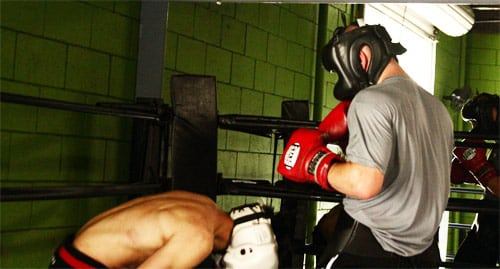
Fighting a guy that’s constantly ducking under can be the most annoying thing ever.
First off, it’s annoying just to miss. But to miss again and again because some bull keeps running his head into your balls is frustrating. Some of them are using every chance to duck out of the fight and clinch you around the waist. Others are constantly positioning themselves in a way that makes it hard for you to hit. It feels kind of dirty and it’s actually against the rules to duck that low.
The most difficult is when it’s a trickster with tons of slick head movement and pinpoint counters (think Pernell Whitaker). The scariest is when it’s a muscular stocky guy who creeps in with hard counters (think Mike Tyson).
I’ve fought all kinds of duckers before and to be honest, I’ve even played the part myself. 🙂 I’ve figured out a few tactics that have worked well for me over the years and definitely dissuaded them from doing it as frequently.
Here’s how you stop the ducker…
WHAT NOT to do against DUCKERS
Don’t try to hit his head!
Honestly, it’s one of the oldest tricks in a book. It’s very often a setup. You’re likely to miss (look foolish) and get tired or even worse, get countered very badly. Anytime you see his head go under or dip low, try to resist the urge to fire at the obvious target. There’s a very good chance he’ll pop right up and come back with a hard counter.
Beware the angle of the level change
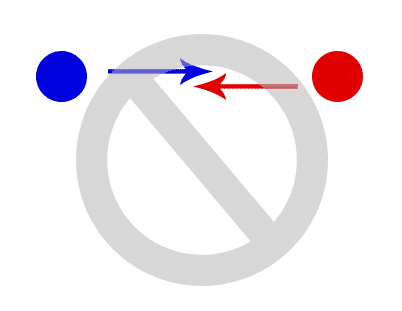
The ducker is not trying to fight you on the same angle.
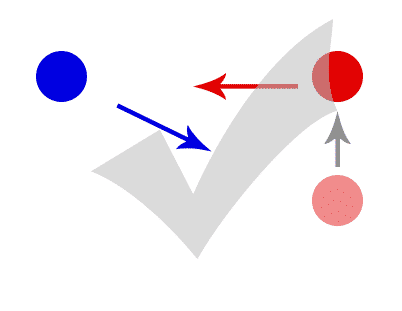
The ducker is trying to bait you to throw downwards so he can go over the top.
WHAT to do against DUCKERS
Control his head
This move works best when the opponent’s head is low AND he’s farther away from you and/or trying to sneak into range with his head low. You can expect that he’s trying to bait you into punching first so that he can slip and counter over the top.
Stick out your front glove and put it over his head and pull it down or guide it away from you. It can be your hand or the forearm part of your arm. As long as his head is stuck down there, he can’t get up to throw punches at you. Just think that for a fighter to throw a punch at you, he kind of has to swing his head at you. So if you can prevent his head from swinging itself at you, you’ll probably be able to prevent him from punching you as well.
Control his head
and you can control his punches.
Lean on him
This move works best when your opponent is really close to you and trying to clinch or trying to wiggle around under you for whatever reason. It also happens often when you’re attacking him aggressively and instead of engaging, he’s trying to escape by going under.
All you have to do is lean your torso on top of his head or back (depending on how low and how bent over he is) and let the weight of your body tire him out. You’ll probably be able to get away with this for a few seconds before the ref breaks you up. It also helps not to hold him with your arms, and even better—to throw little punches at him while doing this so it looks like you’re attacking him instead of engaging in the clinch.
Lean on your opponent
when he bends over.
Throw body shots
Quite often the best thing when he bends over is to throw uppercuts and hooks at his BODY (not his head). This is a great idea because he’s expecting you to aim at the head (which sets up his counter) but instead you aim at his body. Throwing body shots will also pin his arms because he’s forced to defend himself and make it less likely that he’ll throw counters in return.
You don’t have to be so anxious. He’s the one that’s stuck in a position that takes longer to punch from. Take your time and aim a hard uppercut at his solar plexus or reach a hook around to his body on the far side where he’s not expecting one.
Aim for the constant ducker’s body
instead of his head.
Throw a flurry
Here’s your chance to throw those quick flurries and shoeshine combinations to score some points. Let out a bunch of pity pat shots at his head, shoulders, body, wherever you can aim at. You might not do any damage but you can score some points, put some pressure on him and take push the pace a little. Just make sure you’re ready to lean out of the way when he comes up with a counter, and then you counter him!
Keep your hands busy
while he’s busy moving around.
Pivot to the Side
I think this is one of the best maneuvers against a constant ducker and one that’s not as often utilized. It works best when you are closer to your opponent but if you’re further away, you can use lateral movement instead.
So here’s how it works. The moment you see an opponent duck down or bend over, you just pivot around him and that easily nullifies whatever counter he had for you and also leaves him vulnerable to punches and also getting pushed off balance. Try having a friend bend over and see if he can pivot or use footwork while he’s down there.
See how hard it is to have any footwork when your body is scrunched down there? That’s the thing: opponents that are constantly ducking don’t have much footwork maneuverability. They can move their upper body up and down fast and APPEAR to be mobile, but their feet can’t really go anywhere. So all you have to do is cut around them, and then throw punches, lean on them, or push them off balance from their vulnerable position.
You also don’t always have to wait until your opponent is totally bent over or ducking. Even guys that are constantly slipping will sometimes slip low enough that it takes away their footwork mobility. Pivot around them and stick them with your jab while they’re busy trying to be cute with the slipping.
Your opponent has no footwork when he bends down.
The Different Kinds of Duckers
There are so many kinds of duckers out there ranging from the street-thug level to the dangerous stalker level that you have to be careful. I’ll cover some of the more general styles of duckers I’ve faced and ways that I’ve approached them.
Cheap Newbies
They don’t know how to slip and fight with proper technique. They don’t care about the official amateur boxing rules that don’t allow you to dip your head below the waist. They duck down a lot and sometimes even throw shots below your belt line. Keep using your footwork, walking or pivoting away, and you’ll be alright.
If you want to stay close: lots of head holding and leaning on them should wear them out. Lots of body shots will scare them from going down there. If you want to, sure, try some uppercuts at the head while they lean down right into it.
Fight-stallers
I call them the fightstallers because they’re using all the ducking maneuvers to avoid the fight. Maybe they’re hurt or tired or intimidated but for whatever reason, they’re doing all they can to not engage. They’re also like to clinch a lot as well. It also feels like every combo they throw ends with a duck or a clinch or some other annoying evasive tactic.
As annoying as these guys are to fight, the good news is you’re easily winning the fight if you find yourself in this situation. They’ve already lost their will to engage and pretty much resorted to only accomplishing nothing other than to survive to the final bell. They probably aren’t going to commit to any punches and any tactics they have will only be to potshot and run away from you some more.
But let’s say you ARE annoyed and just want to end it already. Here are some things you can do to avoid the fight from getting stalled. Use lots of CLEVER footwork. Every time they lunge in on you, take a pivot whether swinging the back foot around or pulling the front foot back, and watch them fall through the air. Avoid letting them make any contact on you with their arms or their body and you’ll see that they tire out faster when they have nothing to lean on.
There’s a good chance these guys won’t even make eye contact with you so you have all the time in the world to set up your knockout punches. This lack of eye contact also makes it easy for you to throw your punches up and down and land body punches and sneak your shots through the holes in their defense. Keep in mind that fightstallers are usually looking to avoid only the heavier shots and not so much at the smaller touching shots. So you’ll probably be able to jab them to death pretty easily. Just be patient instead of getting too bloodthirsty looking for the killer blow. Use lots of flurries and throw your hard punches only when you’re absolutely sure they’re going to land.
Aggressive pressure fighters
These guys are probably the most annoying and most dangerous duckers. There’s something about the way their head, neck, and shoulders are built that allows them to duck down easily. And it feels like every punch you throw at them smoothly slides off their shoulders and back. They kind of lurk in on you from under all your punches, kind of like a shark racing at you just under the surface. It’s scary because you miss a lot and eat a lot of counter shots from these guys.
First off…lots of head control! You can’t let them swim their head all the way into range for free but at the same time you shouldn’t make the mistake of aiming punches at their head. Stick out a glove to control their head and then aim your shots at the body. Lots of flurries can also do the trick. If you want to start hitting them, aim for the chest and then work your way up towards the head as you get more accurate.
Tricksters
These guys can be the most skilled and most difficult to fight. The tricksters are the guys who love hovering around right in front of you. Some of them will even drop their hands a little bit to bait you into going for the head. They’ve got incredible head movement and strong understanding of their opponent’s movement instincts. They know how to avoid entire combinations and especially when they’re in their groove, they can be the most difficult opponents to hit. You’ll miss and miss and miss and eat counter after counter. Even if they don’t counter you, you can still get really frustrated and thrown off your game…which would give them control of the fight.
There are so many ways to approach a trickster (or slickster). It really depends on how they go about it. Some of them are more herky-jerky and use awkward movements to break your rhythm and make you stop and go and second guess yourself. Some of them are more of the smooth, ultra-slick type, where they know how to slip and slide around everything that you throw making you feel like you’re the awkward one.
Any time that you feel it’s a setup, don’t go straight for the punch, step away. Or step around. Make them reset and come back into you again. Turn it into a moving fight where they can’t just stand in front of you and be pretty. Stick the jab and move, keep pivoting and turning them. Make them work to keep up with you. Don’t come to them, make them come to you. If they’re going to counter you, make them lunge and put themselves at risk for the counter, rather than to make it easy for them by you always coming into to their space.
Keep your jab in their face or in their chest (if their head moves too much). Don’t always be so reactionary. Apply some tricks of your own. Set up your own tricks instead of always trying to solve theirs. Set your own traps! Don’t get tentative because you missed wildly a few times. Stay busy and stay aggressive. The more passive you get, the more time and traps they get to setup and the more defensive you get which only further shuts down your offensive opportunities.
Be comfortable with landing only one punch at a time. It’s not ideal but be ok with it. You might land a good hook or a good counter cross here and there. Be ready to fight it out one or two punches at a time. It might be an awkward potshot fight. Don’t try so hard to make it a combo-fight where you land 3, 4, 5 punches at a time. With these guys, you are most vulnerable when you try to establish a rhythm and they use it to time you with hard counters.





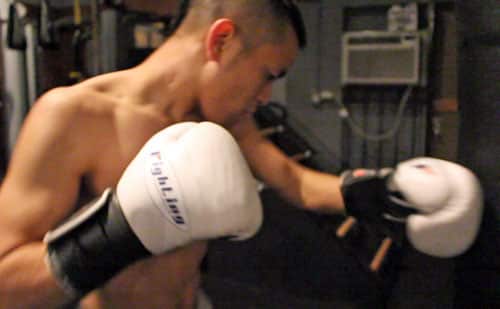

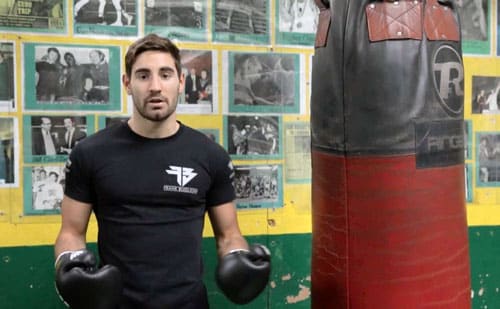
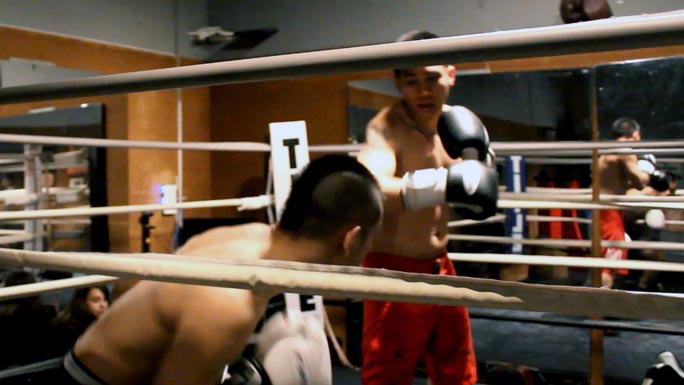
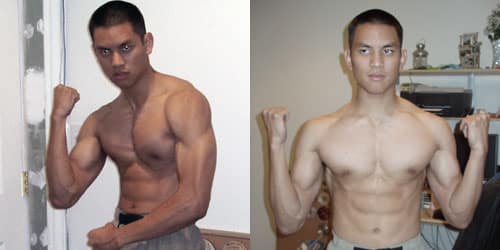
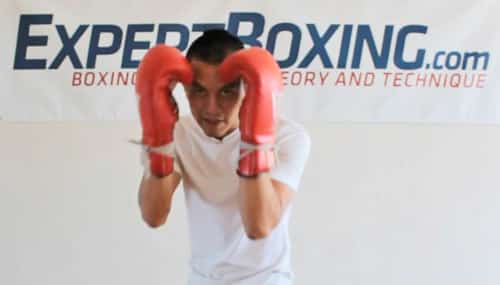
Nice article johnny, can I ask a question?
1 of my sparring partners is a little shorter than me, a lot lighter and has 10+ years experience on me, however I can use my reach, size and southpaw advantage to be competitive. Thing is he always catches me out he ducks in low with a hard body shot then while I’m busy trying to throw back or block his punch he throws a big overhand which I don’t even see coming. Any ideas?
get more experience and knowledge
step back and counter him after the ‘big overhand’…
Hahaha, this is so true! Just wait for that big overhand and then counter.
Thanks for the article. Is it OK to punch the ducker’s upper back (As exposed in the picture shown)?
No. Hitting the back of your opponent is not allowed. You CAN however hit the back of his ribs. Send a hook though, not a straight punch, so it looks more like you’re hitting his sides rather than his back.
I’ve been using the trickster style for years. Baffles most people. Even I had trouble putting it into words like you did! Great article!!
Is stiff arming like you mentioned legal in amateurs or is it one of the gray areas?
Well stiff-arming is KIND of a gray area in that it’s not illegal but you can however sort of get away with it if you: A) make it look like you’re trying to at least punch or tapping punch with that arm or B) you don’t actually make any contact with his head and so it’s just you threatening to touch and him moving so he doesn’t get touched.
Stiff-arming to control the head, that is.
you got them alk. but somehow you left out the check uppercut. when you get the timing down and youre close enough the check uppercut is the end cuz if theyre on the way down, theyre usually in a hurry and they cant see the shot. otherwise, if theyre too far and the uppercut woud be long and ineffective, going for the ears works. amazing people still don’t. i remember a sparring session i ended up busting someone’s ear drum as they were ducking into a body shot. grown man began to cry dude. it must pain like hell. he made me feel guilty cuz he had to get it repaired with surgery and he couldnt put water in it. like im supposed to pay for that. i still remember his pain though, ear shots are grossly underrated.
after theyve ducked down, holding the head for maximum control. or at least having the other hand outstretched to gauge that distance and cover his eyes. if one has even a fair uppercut and the ducker doesnt keep his vision clear.. it’s the end of the sparring or fight. but the uppercut is so badly done. in tyson’s time everyone was learning to uppercut.
leaning was also very under used until floyd brought it back. now everyone does it. i hated when tall guys (Everyone) did it to me, i was taught to pivot and drop them on their ass. i think i saw lomachenko do it to someone, i had to smile 🙂
the beautiful thing abt this post, is how u prioritise. the pivoting around is amazingly effective to get those cruel body shots that forces those who duck to pay. but unless one uses that hand on the head, the opponent will just pivot and create space again. making the pivot useless.
one final idea, and i know you’re not too fond of this, but switching after throwing the backhand is devastatingly effective. european and south american fighters are doing it more. golovkin does it a lot, i think maidana did too. once that right sails over and the ducker is now looking to see when he can come up, avoid the left hand, switching allows for the left hook he expects to turn into a rear left uppercut. and the right hook is completely out of his visua range. so when he comes up he’s watching only one hand.. boom.
say johny, could u do me a favor and think about,why most fighters can’t get KOs outright, rather knock people down ? i was like that myself. not one punch and fight’s over but if i got it right i could at least buzz a guy or put them down. then pile up the pressure and win like that. even when i sat down on the punches more, i didnt get one punch KOs.
i have a guy im teaching who has good power. he’s knocking people down with grazing shots. but strange enough, even when he sits down more he can’t just knock em out. i used some of ur tips off those workshops 😉 good stuff. in fact i think there are only maybe 15 guys in history with one punch and out cold power. like tyson, and roy jones, foreman, julian jackson, sugar ray robinson, thomas hearns, langford, fitzimmons. even joe louis wasnt a one punch KO guy right ? it’s really puzzling me that 99% of boxers with power to hurt anyone don’t achieve one punch KOs even on lesser or chinny opponents. there must be some piece of the puzzle missing. give us thy wisdom johny
Which A or A+ fighter has been 1HKO’d (excluding times when they were malnutritioned, dehydrated, fouled against, or fighting a cheater/PED user, etc.).
After narrowing the list, in what fashion were each of the remaining ones 1HKO’d?
That may help.
Anon: duran, roy jones and fulmer the only ones i can think of. pacquiao. i thought michael nunn was A- before toney. B+ quite a few. some that float to mind are abner mares, julian jackson. oh, A or A+ fighters but somewhat past prime: Walcott. Out of weight class: mike spinks. de la hoya, hearns himself got KO’d when already tired out against Hagler. dempsey i hear i hear about.
Thanks. My list of criteria reflected my hypothesis on the matter. With the necessary statistics, I would theorize this…
Considering your list:
Roberto Duran 33 vs Hearns 26 (age, 7 years apart)
RJJ vs Glenson 35 vs Johnson 35 (age, split-second reflex deterioration)
Fulmer 26 vs Robinson 36
Pacquiao 34 vs Marquez 39 (leg trip + Angel “Memo” Heredia + 4th fight)
Statistically, only Fulmer vs Robinson out of the bunch is a 1HKO of a fighter who was not negatively affected in any way by a clean legitimate punch—the only one that has satisfied the criteria.
However, note that Fulmer lost three times to relatively unknown fighters prior, such as Boyd who had 6 losses prior and an unimpressive record of 54W 14L, while Robinson similar to Pacquiao is the type of fighter that still dominate in their thirties.
So out of the bunch, there is 1 count of an A level or above fighter that has satisfied all of the proposed factors.
Factors that contribute to the likelihood of 1HKO (from most to least important)
-Skill/experience gap
-Awareness of receiver (low stamina and recklessness is a large contributor to decreased awareness)
-Age of receiver (including reflexes, speed)
-Power of puncher (including punching technique and natural power)
-Chin of receiver
*Note that power and chin are placed lower than the other listed factors. To illustrate the point, Mayweather, who is a “stinging” puncher, CANNOT be categorized as a KO artist, let alone a 1-hit puncher. However, he 1HKO’d Ortiz with a sucker punch (lack of awareness).
So the reason why I brought up A/A+ level fighters (that met my listed criteria) and ignored low level fighters (B and below is low, A is generous already) is because I believe that 1HKO occurs when the receiver of the punch lacks an appropriate response to a well-timed punch. A larger gap in experience means better timing and prediction for the puncher, and the opposite for the receiver. A decrease in awareness and stamina means a lack of response and decreased durability from the receiver (against the same punch). A deterioration in reflexes means again a lack of appropriate response and awareness from the receiver (against the same punch). The assumption is that it is a powerful punch.
Therefore, the power of the punch (including whether you sit harder on it or not) is the first ingredient of achieving a 1HKO, but is not capable of operating independently of any of the other factors. Therefore, one who has 1HKO power can always 1HKO a still target, but the probability of 1HKO will decrease against a moving target. As response to the punch increases, the probability of 1HKO decreases.
Finally, adding in the factor of the chin. “Chin” can (largely) operate independently of the other factors (e.g., Brandon Rios), but it is not the most important factor because with “power” that is proportional to and offsets the “chin” factor, the other variables must come into play again.
By this logic, a fighter with an inferior chin can increase their chances of not being 1HKO’d against a power puncher by having the (minimal) appropriate responses to the punches. To put into perspective, despite Mayweather being the defensive fighter, Pacquiao is the one with the better response to punches (when contact occurs). Mayweather is defensive in the sense that it is difficult to connect (or to connect solidly), but in terms of receiving a punch, Pacquiao’s movements can negate the power of a punch even if it is loud upon contact. However, Mayweather does have above average responses to punches and an above average chin, and it remains that he has yet to be 1HKO’d.
As mentioned above, it is my opinion that despite Robinson’s age, Robinson was superior in skill and experience, and Fulmer when receiving that blow had a lack of awareness to the punch (due to the nature of the punch).
This is my theory from experience and observation. What do you think?
Getting a knockout has to do with the timing more so than the raw power itself (although that greatly helps, too). The best chance of a knockout comes when 2 fighters trade punches and a punch is landed while the victim is throwing his own momentum into the punch and also focusing on his offense rather than defense. This situation is hard to find because it requires 2 people to be willing to exchange punches. The more skilled, trained, and experienced the fighter, the less likely he will be willing to walk in and trade punches.
Anon you’re right of course. All punches being damaging depend on how much the receiver is slow to react. Shopworn fighters are easier. Still doesn’t explain why some guys like Tyson and Roy Jones got them while fighters , fraction under didn’t. Fulmer wasn’t knocked out before was he? Chuvalo lost a lot never knocked down. I guess it’s speed and the slow reaction to absorb the punch. Sometimes though Ive punched people so hard I feel like my hand broke. And the head snaps and I worry I’ll kill them. And they get dazed but not out. Others like Julian Jackson seem to hit just as hard a me but knocking ppl silly
*Sry if this is in less logical order or if there are holes in the the explanation.
That’s true, but Fulmer lost by UD rather than KO to boxers lesser than Robinson. Even if he was a great fighter, I would not put him in the same category as Robinson. Based on the list, no top level fighter was ever KO’d by an equal or lesser fighter (under the specified criteria (which excludes Fulmer vs. Robinson, and Pacquiao vs. Marquez as well not only based on Heredia, but also on the fact that they fought 4x), right?
So that would mean 1HKO’s depend on not only reaction, but experience. Top level fighters who have great reaction, but not to the extent of slick black fighters have experience that leads to anticipation, and a predetermined set of (habitual) movements that are stemmed from that.
To summarize, I placed “experience gap” above “awareness (stamina, recklessness)”, “age”, “power”, and” “chin”.
With this explanation, it would make sense because now the # of fighters who have achieved KO’s under these criteria vs fighters who have achieved KO’s outside of these criteria would be significant, right?
Then in those instances, then moving down the list of criteria would work. So in the order of those criteria, that would be probably how KO’s are achieved.
Last, Hopkins vs. Kovalev, Kovalev moved down the list of criteria to get closer to KO’ing Hopkins. Only as he diminishes the top criteria, does the lower criteria (Kovalev’s power) come into play.
So like in your situation, you may have hurt the guy early, like Kovalev hurt Hopkins early, but maybe you didn’t diminish the upper criteria?
Doing Muay Thai has its advantageous, the other guy ducks and I knee him in the face. simple as that.
strikes to the back are allowed as long as you leave the spine in tact. Johnny you should try muay thai.
for boxing. throw a half-way jab (half extended jab), follow up with an upper cut .
Very strange comment. Muay Thai counters are not allowed in boxing. It would be like me recommending a defensive football maneuver for an NBA guard.
Can you discuss or answer the question of what is a boxer to do when facing a fighter who is prone to throwing lots of haymakers
Hey jonny love what you do I look at your website for everything that has to do with boxing dont stop ! My
Question is I have been boxing for 7 moths but not consecutive im trying
To find my style I dont know if im natrually talented but I do know I pick up
Tatics skilles strategy quick and iv been told. I have spared and yes I have lost matches but
I learn quick i spared with guys that spared pros and never got
Out classed by them I have realy good footwork and power and speed
Im very slick and I like to move around a lot but I still dont know
.. What should I do ???????? Help plz .. can I send you videos of me sparring
? So you can help me out
You are probably talented. In fact, I think it’s very obvious.
From what you said, of course. 😉
How dose one make the talent work ? Im not trying to show that im a show off or cocky because im the opposite im very humble I dont talk a lot im quite in the gym
First, read Johnny’s “How to Choose Your Fighting Style” article. In it, he ends with, “…so how do you choose your fighting style? Honestly … you don’t.” This hints at a high philosophical understanding of boxing.
But anyway, back to the point. What your talent is may depend on how you improved within the time span. It’s obvious you have high motor skills, but is it the sole or primary factor? Therefore, rather than “finding your style,” perhaps there is some way to facilitate your learning. The key here is to reach a level where it would have otherwise taken you longer.
From what you said, I would presume…
Strong kinesthetic intelligence and high attention to detail were likely necessary to achieve that.
You may have high pattern recognition and inference skills.
Movement and experimentation in conjunction with analysis facilitates the learning of moves (due to your quiet nature).
Kinesthetic intelligence was a catalyst for logical skills (but that may not be the case).
To help, some preliminary questions to indicate facilitating factors might be:
-Did you learn all your movements purely from your coach, or from self-studying tape, etc.?
-How would you classify your boxing style (e.g., textbook, unorthodox, elusive, etc.)?
-Do you have knowledge/experience in other physical activities (e.g., balance beams)?
-Your age, weight, height?
-How many days per week do you train and for how long each day?
-Are you good at math and problem solving?
-Do you attribute your current prowess to “testing things out on the fly,” “repeated studying/reviewing of tapes,” or both?
-Would you classify yourself as someone who thinks outside the box?
-Do you have your own theory on boxing, or are traditional theories gospel?
-Are you more diligent or lazy?
-Do your “experiments” always trump the common belief?
-Describe is the sequence for transition (usually) from defense to offense?
-After you step out, what do you usually proceed to do?
-Is your stance more square or bladed or do you think you switch between the two naturally?
-Between straights, hooks, and uppers, which one do you think is your most effective type, and which is most destructive?
-Footwork, power, speed. In your opinion, which is most important?
-Name the exercises that you believe (at this time) have taken you this far.
-In your opinion, is offense or defense more versatile?
-Do you make sure to master the fundamentals your coach teaches you, even if you have an alternate way of doing it?
-Would your style rely on points, KO’s, or does it not matter because you are in control anyway?
These questions might give an indication of what type of talent you are more dependent on.
You don’t need to answer me, just answer to yourself. It might give you an idea of where you’re at and what you might want to do or keep doing.
This article is cool because it contains concepts that are useful in an MMA context.
Thank you!!!
When my opponent ducks too much, I feel like he’s just baiting and waiting for me to throw some dumb uppercut and counter off it with a hook or overhand.
Is this a valid insecurity? or am I just thinking too much or too afraid of that counter?
Until you go for him, you don’t really know what he’s doing right? Test him, feint him, hit him.
Thanks so Jonny.. I’m Adah from Africa… Really if it wasn’t your web site , I might have quited Boxing… But even now I’m stil learning new things
I fought one guy like this (the shark type) on two occasions. I won on both occasions but the first one was a very messy fight, we both ended up with cuts and I just edged it maybe because the judges liked that I was more of a boxer. The second time was alot easier, basically worked everything off the jab and didn’t actually commit to many punches at all 😆 so I can confirm that the tip tap stuff is absolutely a good strategy against guys who like to live underneath you! I wish I had read this first tho 😁